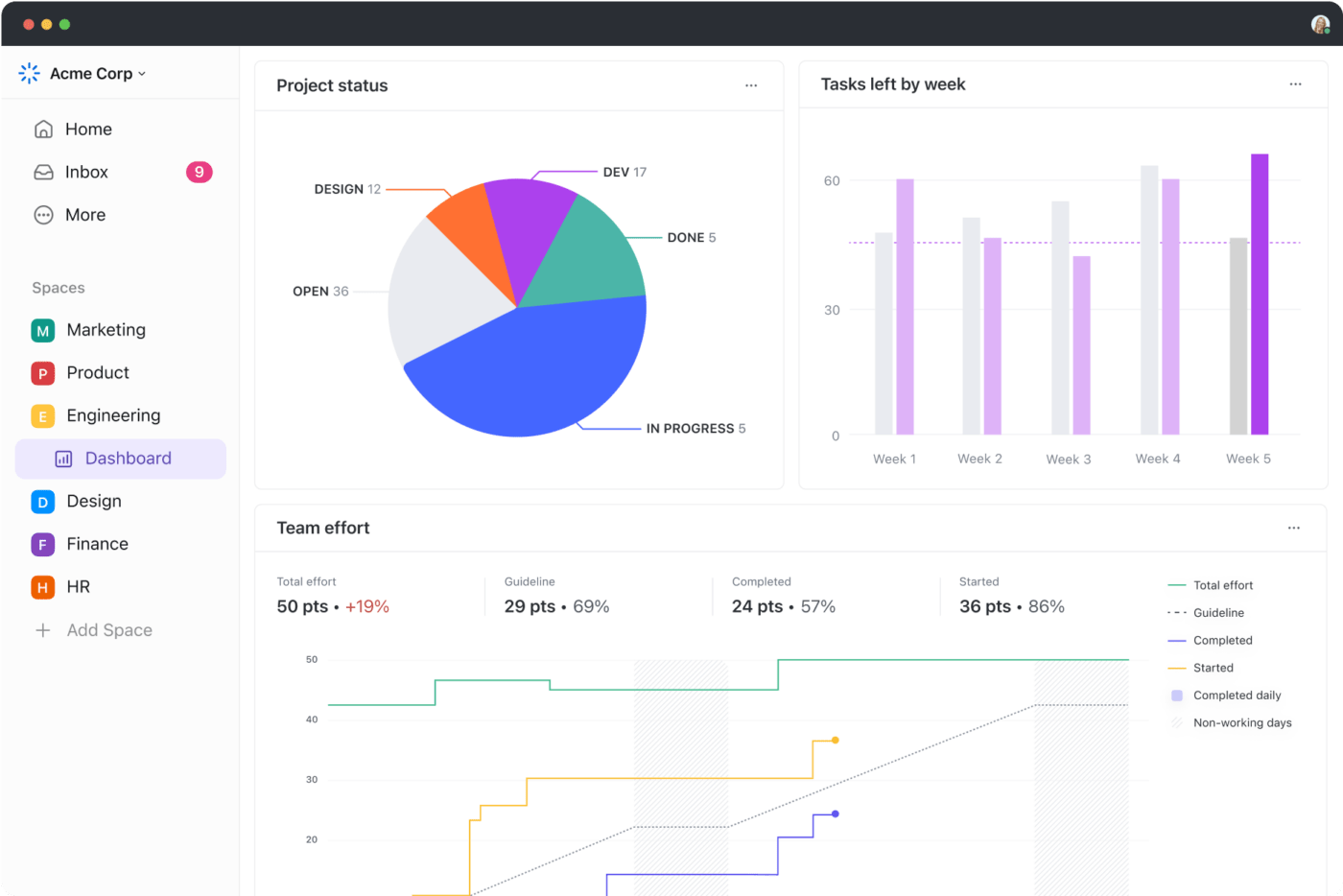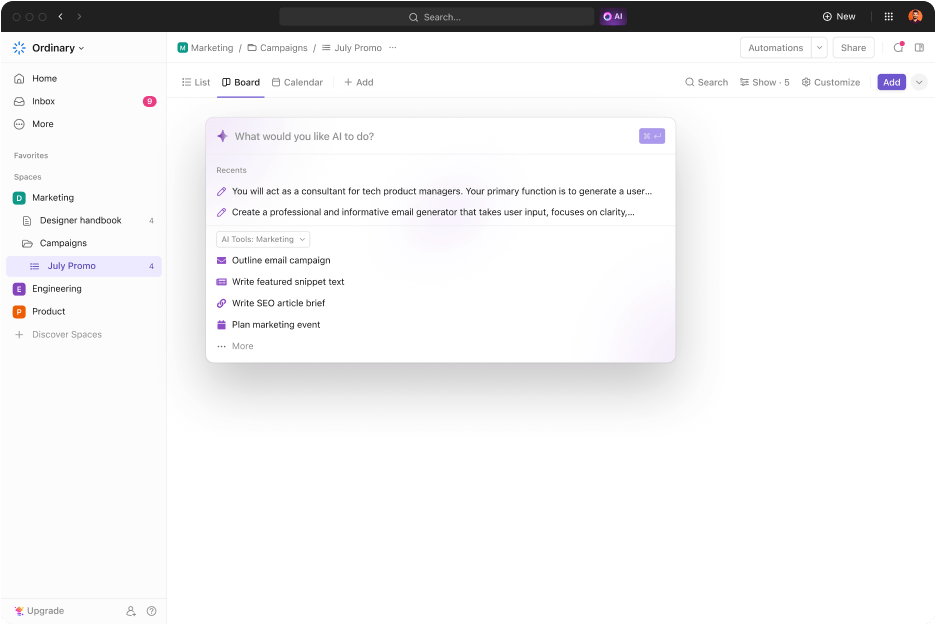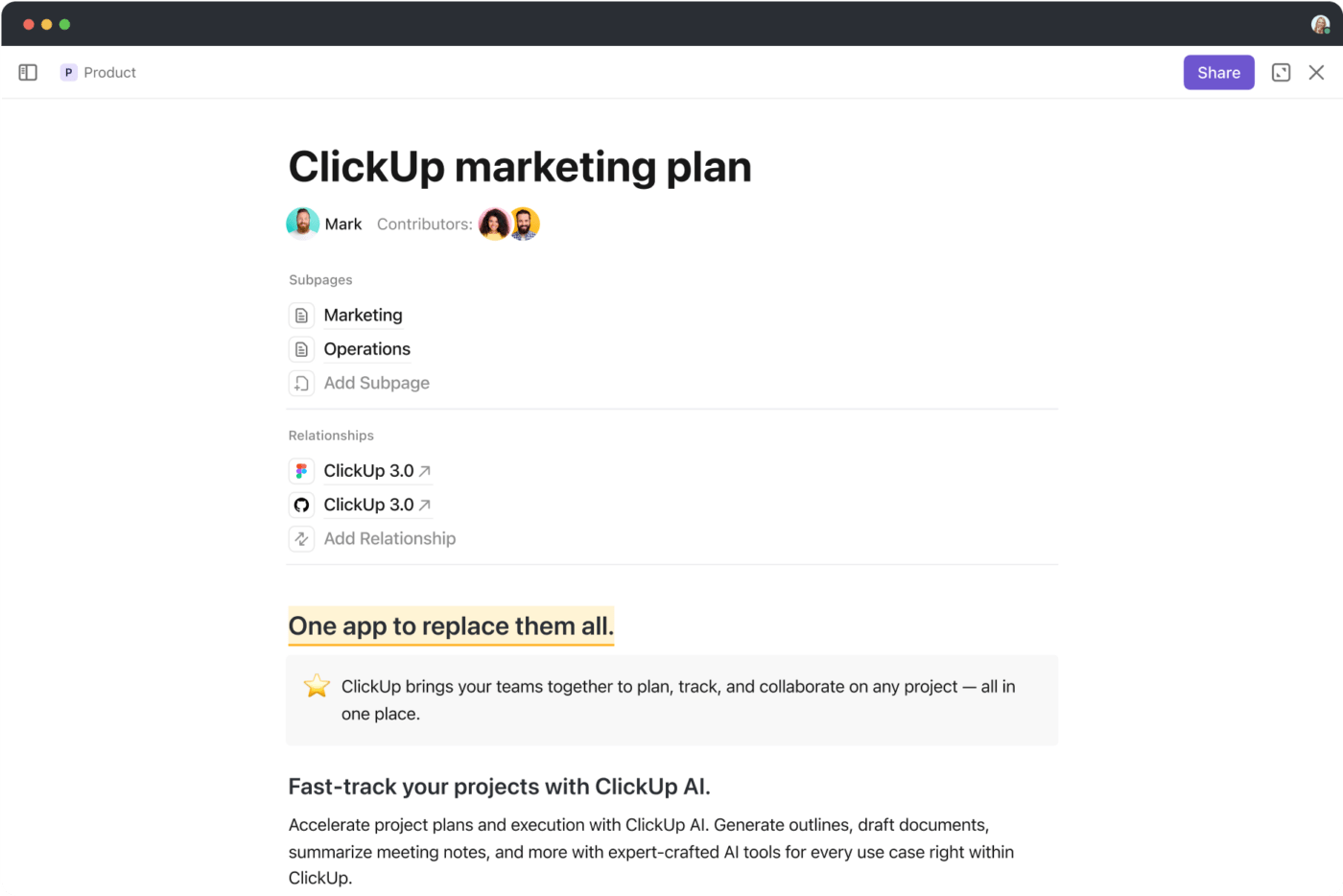Building a Powerhouse Growth Team: Strategies, Roles, and Tools You Need

Sorry, there were no results found for “”
Sorry, there were no results found for “”
Sorry, there were no results found for “”
In today’s business world, where competition is fierce, and markets shift faster than ever, having a structured growth strategy is a survival skill. And having a capable growth team that knows how to drive results, adapt, and grow alongside the company is a superpower for growth leaders.
Growth teams have evolved from scrappy, experimental groups into essential units that shape the company’s future.
Whether starting from scratch or refining an existing setup, understanding the right structure and strategy can turn your growth team into a real game-changer.
Let’s get into it then.
A growth team is more than just a collection of marketers, product managers, or data analysts. It’s a cross-functional group focused on one thing: driving measurable growth for your company.
Whether that means acquiring new customers, scaling up your start-up, or maximizing existing revenue, a well-built growth team cuts through traditional silos to tackle growth challenges head-on.
Growth teams operate on key principles that set them apart. These principles include:
So, what does a dedicated growth team actually do?
Growth teams focus on user acquisition, engagement, retention, and monetization. Here’s a breakdown:
Also Read: OKR Examples for Growth
A well-defined strategy is the backbone of any growth team’s success, and it’s a hallmark of many successful product-led growth (PLG) companies.
Here’s how to go about defining your own winning strategy:
Every successful growth team starts with a clear vision. Defining this vision isn’t just about lofty goals—it’s about setting concrete, actionable objectives that align with your company’s long-term mission.
Ask yourself: What does success look like for this team?
Whether scaling user acquisition or increasing revenue, establishing a focused vision gives your dedicated team a strong foundation to operate.
Once your vision is set, it’s time to decide how you’ll measure success. Any growth team thrives on data, so identifying key performance indicators (KPIs) is essential.
Choose KPIs that tie directly to your growth objectives, such as:
A growth team doesn’t work in isolation—it’s a key part of your larger business strategy. Make sure your growth objectives support the company’s overall goals.
For instance, if the business aims to expand into a new market, the growth team should prioritize strategies that drive user acquisition and engagement in that region.
Read More: Explore how product-led growth can drive success for SaaS companies, focusing on strategies that put your core product team at the forefront of customer acquisition and retention.
A well-structured growth team is essential for driving cohesive and impactful results. With defined roles and clear responsibilities, each team member can contribute effectively to the company’s growth objectives.
Every growth team thrives on diverse roles, each with distinct responsibilities that drive results. From setting strategy to analyzing data and refining the product, each team member plays a critical part in achieving growth goals.
Here’s what your growth team structure should look like:
| Role | Responsibilities & Goals | Key Skills |
|---|---|---|
| Growth Leader | Set vision and strategy, align team goals with business objectives, and lead projects to meet KPIs. | Leadership, Strategic planning, KPI management |
| Data Analyst | Analyze data to provide actionable insights and optimize key metrics for user engagement. | Data analysis, Metrics interpretation, SQL/Excel |
| Growth Marketer | Develop and implement strategies to drive user acquisition and retention through effective campaigns. | Marketing strategy, Campaign management, Brand positioning |
| Product Manager | Guide product development based on market trends and user feedback to support growth objectives. | Product development, User feedback analysis, Market trend analysis |
Growth doesn’t happen in silos; it requires seamless collaboration across multiple teams to achieve meaningful impact.
Here’s how your growth team can boost effective cross-functional collaboration:
💡 Pro Tip: Use growth plan templates to optimize your team’s strategic planning.
Templates help outline objectives, set clear KPIs, and establish timelines, making it easier for new and existing team members to align with the overall growth strategy. A solid plan template will help your team focus on execution while staying aligned on big-picture goals.
To build a growth team that performs to the best of its abilities, you need the right mix of talent, effective onboarding, and a culture that values collaboration and innovation.
Let’s look at these factors in detail:
Identifying the right talent is the foundation of a strong growth team. Look for candidates with a mix of analytical, creative, and collaborative skills. Prioritize those who are adaptable, data-savvy, and motivated to drive impact.
A thorough onboarding process integrates new team members effectively, equipping them with the knowledge, tools, and context they need to succeed. Set clear role expectations, establish growth objectives, and provide them with essential tools and process training.
Encourage a team culture built on collaboration, experimentation, and open communication. Create a safe space for idea-sharing and risk-taking, which are key ingredients for innovation and continuous growth.
💡 Pro Tip: Align your growth team with frameworks like OKRs (Objectives and Key Results), V2MOM (Vision, Values, Methods, Obstacles, and Measures), or the Balanced Scorecard.
These growth hacking tools help keep your team’s goals synced with company objectives, ensuring everyone’s rowing in the same direction! 🚀
Data analysis is the backbone of growth. It allows teams to:
By consistently monitoring and interpreting data, teams identify what’s working, spot potential issues, and adjust strategies in real time. This commitment to a data-driven approach ensures that solid metrics back every action. It reduces guesswork and enhances the precision of growth initiatives.
Using the right tools is crucial to establishing a truly data-driven approach. Look for analytics and reporting software that offers real-time tracking, customizable dashboards, data visualization, and automated reporting.
This is where tools like ClickUp come into the picture.
It is an all-in-one productivity platform that goes beyond typical project management. With ClickUp’s customizable Dashboards, your team can access powerful insights tailored to specific needs.

Be it managing team workloads, tracking marketing campaigns, or monitoring sales metrics, with ClickUp Dashboard, you can do it all.
ClickUp Dashboard helps your team:
💡 Pro Tip: Experiment and iterate: They’re essential for growth!
Experimentation allows teams to test ideas, measure their impact, and make informed adjustments.
For example, experiment with different onboarding flows to boost user retention. Test options like a tutorial-based flow versus immediate feature access to see what resonates. Use the data to refine and continuously improve the experience based on real feedback.
Growth teams face unique challenges impacting productivity, morale, and long-term success.
Here’s a look at key challenges and actionable solutions to address them.
Teams often juggle multiple initiatives, making it easy for tasks to fall behind or for workload imbalances to occur. They may struggle to get everything done, with no clear idea of what is more important and should be prioritized.
Solution: Manage workload with ClickUp’s Task Management and Workload View

ClickUp Task Management streamlines team projects by providing a versatile platform for organizing and monitoring tasks. It features customizable fields, five priority levels, and task dependencies that enhance workflow and prevent delays.
Users can easily manage task specifics such as due dates, types, and assignees, and maintain control over task status and progress across multiple projects.

You can also use ClickUp Workload View to get a real-time snapshot of each team member’s capacity and utilization. This allows managers to balance tasks and prevent burnout. This tool enables quick adjustments by showing who is over or under capacity and lets managers define unique capacity levels for each team member.
Time estimates help in accurate capacity planning, and multiple view options (one-week, two-week, or one-month) facilitate effective long-term workload management across sprints or projects.
Introducing a growth team often involves new strategies and processes, which can sometimes lead to resistance from other departments or team members.
Solution: Win trust with transparency
To address resistance, promote a culture of transparency and inclusion. Regularly communicate the benefits of the growth team’s initiatives and how they support company-wide goals.
Invite feedback, address concerns, and highlight early wins to build support and enthusiasm. You can also involve key stakeholders in the planning stage to decide the growth team’s goals collaboratively.
Focusing solely on immediate metrics can sometimes detract from a team’s long-term strategic goals, leading to unsustainable growth.
Solution: Create a balanced metrics framework for sustainable growth
Set clear short-term and long-term goals to ensure both immediate results and lasting impact. Track metrics for quick wins—like campaign performance or engagement spikes—alongside long-term indicators such as user retention and lifetime value.
Read More: How to Develop a High-Performing Team
Apart from knowing how to build a growth team, you must also be aware of the strategies they can rely on to be effective. Equipping the team with the right tools and resources can significantly enhance efficiency and drive results.
Here are the things you must consider:
A well-rounded tech stack is vital for a growth team to operate seamlessly. Software platforms enabling data tracking, task management, and collaboration help growth teams align goals, measure impact, and iterate quickly.
With these needs in mind, ClickUp offers versatile tools to support every stage of growth operations, from task organization to seamless collaboration and data-driven experimentation.
ClickUp helped me eliminate the chaos and organize my agency operations so I could focus on my agency growth strategy.
Let’s take a closer look at ClickUp’s growth-specific features:

ClickUp’s Board View organizes tasks in a Kanban-style layout, making it easy to visualize project stages and move tasks through phases. This view allows teams to manage workflows with custom columns, set work-in-progress (WIP) limits, and visually track task progression for a clear project overview.

ClickUp’s Collaboration Detection tools allow team members to work together seamlessly. It enables multiple team members to edit and comment on documents in real time simultaneously. This ensures all team members stay aligned and connected, even remotely.
Everybody can see live changes, comments, and edits as they happen, keeping everyone on the same page. Plus, all relevant team members get notified of status changes, new comments, etc.
The ClickUp Growth Experiments Whiteboard Template is tailored for managing and tracking growth initiatives. Teams can brainstorm, prioritize, and visualize experiments in one space, enabling a data-driven approach to test and iterate on growth strategies.
Read More: Kickstart your growth initiatives with 10 free customizable growth experiment templates.
ClickUp provides a complete workspace for marketing teams to plan, execute, and analyze campaigns. With specialized tools for campaign planning, team collaboration, and performance tracking, ClickUp empowers your marketing team to work faster and smarter.
For instance, ClickUp Brain helps teams brainstorm and create content briefs, campaign ideas, emails, and case studies in record time, ensuring marketing goals are met with expert-level quality.

Marketing teams use tools like ClickUp Docs, Whiteboards, and proofing to collaborate seamlessly from ideation to launch, keeping everyone aligned at every step.

Additionally, you get a head start with multiple templates for campaign management, content marketing, event planning, and more, simplifying essential marketing processes.
Read More: Discover the 11 must-have marketing tools for small businesses to boost efficiency, drive growth, and streamline your campaigns.
Continuous learning is key for growth teams to stay updated on trends, best practices, and innovative strategies. Online communities offer valuable insights, networking, and resources tailored for growth professionals.
Some of the top communities to follow include:
One of the most influential teams in the field, Google’s AI research team comprises global experts in artificial intelligence (AI), machine learning (ML), and advanced computational sciences.
Their strategy boosts innovation through a collaborative approach, which includes sharing research findings, iterating on projects, and encouraging idea exchange among team members.
Spotify, a global leader in music streaming, has expanded its reach to over 400 million subscribers by integrating podcasts, live audio, and audiobooks. Spearheaded by CFO Paul Vogel, Spotify’s growth strategy is crafted to achieve a milestone of one billion users.
Strategy:
Outcomes:
Assembling a growth team from scratch is like baking the perfect cake—you need just the right mix of ingredients and the ideal settings to get it right. Find skilled and curious people, support them with the necessary tools, and provide them with a collaborative environment that encourages innovation and agility.
This team doesn’t just keep the business afloat; it powers it forward by constantly testing, learning, and pivoting when needed. With the right blend of strategy, data, and experimentation, a growth team can turn the unpredictable into the unbeatable.
With ClickUp, your team has the ultimate toolkit to manage tasks, track performance, and collaborate seamlessly—all from one platform. ClickUp’s all-in-one functionality empowers your team to turn big ideas into real results, keeping everyone aligned and driving towards growth.
Ready to see it in action?
Sign up for ClickUp today—it’s free and built to grow with you.
© 2025 ClickUp